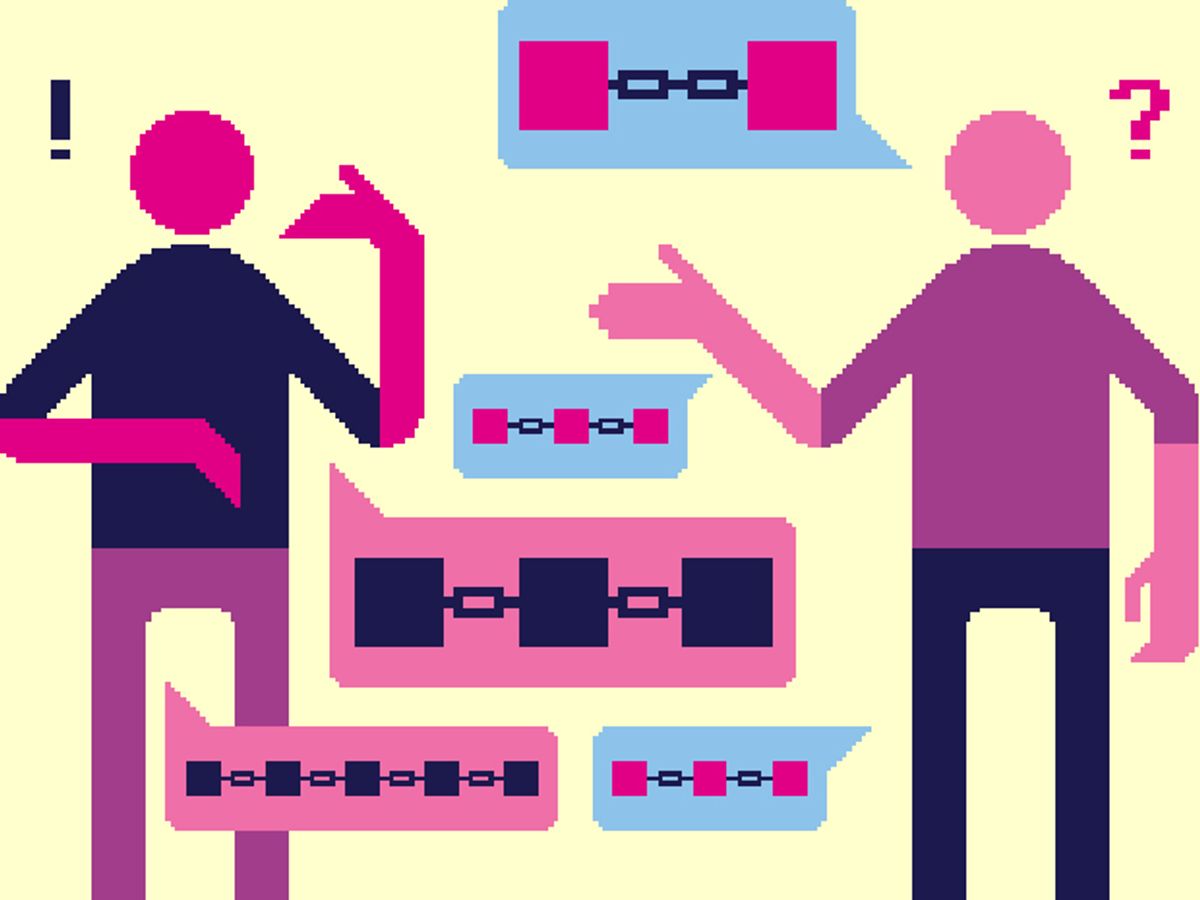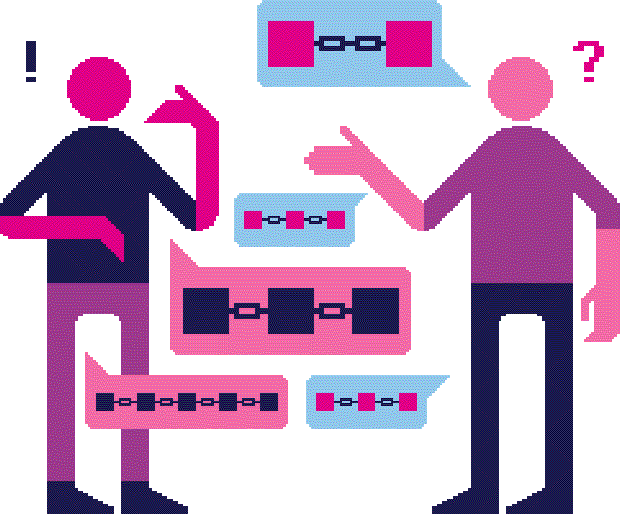Blockchain Lingo
The terms you need to know to understand the blockchain revolution


Like any new technology, the development of the blockchain required the invention of new words to describe its parts and their uses. Perhaps because it was invented by an anonymous hacker or because its subsequent application spread so widely, the lingo of blockchain can seem a bit odd. The list below will help you understand the basics of blockchain. Put your suggestions for other unusual blockchain tech terms in the comments, and maybe we’ll add them.
Blockchain
A shared database that grows only by appending new data, authenticates users with strong cryptography, and leverages economic incentives to encourage mistrustful strangers to manage and secure updates.
Block signers
The actors in a proof-of-stake blockchain that are responsible for validating transactions and adding them to the blockchain.
Ethereum
A public blockchain designed to store and execute smart contracts and other complex software apps. It features its own cryptocurrency, ethers. The first version of the software was released in 2014.
Hash function
An algorithm that digests a chunk of data of arbitrary size and turns it into a string of numbers and letters of fixed length, called a hash. The function is a one-way operation used in blockchains to choose which participants update the chain.
ICO
Initial coin offering. A way of funding new app development on blockchains, it involves the sale of cryptocurrency before the software is released to the public. The cryptocurrency typically gives users access to the app under development.
Miners
The individuals that add new blocks to public blockchains that use proof of work, such as Bitcoin. Their actions both secure the entries on a public blockchain, and provide a mechanism for the distribution of new coins. They gain the right to add new blocks by spending computational resources, and the network rewards miners by allocating new coins to them.
Oracle
An entity that records data about real-world events—such as the ambient temperature or the outcome of a presidential election—on a blockchain. It serves as a reference for smart contracts.
Permissioned ledger
A database, inspired by blockchain technology, that restricts access to reading, writing, or both to a set of known actors. It’s also called a private blockchain.
Proof of stake
A mechanism for allocating the right to add new blocks of data to a public blockchain. Participants gain the right to add new blocks by proving they own cryptocurrency.
Proof of work
A mechanism for allocating the right to add new blocks of data to a public blockchain. Participants (miners) gain the right to add new blocks by repeatedly running a hash function.
Public blockchain
A blockchain that is open for anyone to look at and to add new blocks to. Certain resources (computing power, possession of the native cryptocurrency) may be required to add new blocks, but anyone has the right to do so.
Smart contracts
Software-based agreements deployed in systems capable of automatically executing and enforcing the terms of the contracts.


